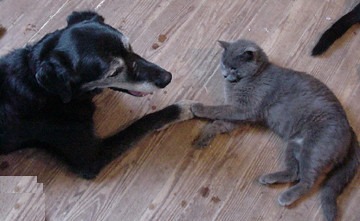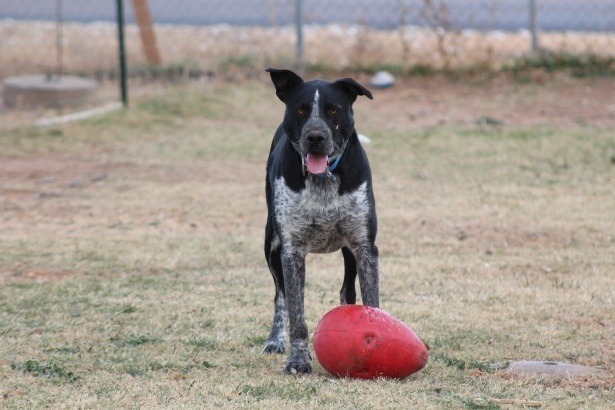Getting old comes with a plethora of healthcare issues. Medical problems likes osteoarthritis, chronic kidney disease (CKD), and cognitive dysfunction (CD) are relatively common. The latter – more commonly referred to as senility – is an under-appreciated cause of behavior changes in our older pets. In this week’s post I share some information about this condition. I hope you find the post mentally stimulating. Happy reading!

What is cognitive dysfunction?
Cognitive dysfunction – also known as dementia and senility – is a degenerative disorder of the central nervous system, particularly the brain. As cats and dogs get older, several changes occur in the brain, including:
- Brain atrophy – The brain shrinks in both size and weight. These changes occurs especially in the cerebral and cerebellar cortices
- Ventricular enlargement – Ventricles hold cerebrospinal fluid (CSF). As brain tissue shrinks, CSF fills the atrophied areas to cause ventricular enlargement
- Beta-amyloid accumulation – Beta-amyloid is a neurotoxic protein that can form plaques and infiltrates around blood vessels in the brain and in certain areas of the brain, including the cerebral cortex and hippocampus.
- Microhemorrhages and infarcts
- Alterations in neurotransmitters – Monoamine oxidase B (MAOB) is an important enzyme whose activity increases with age, more so in pets with CD. The function of MAOB is to metabolize dopamine, and thus increased MAOB activity means there is less dopamine available.
- Abnormal growth factor expression – The forebrain of dogs with CD have reduced expression of a nerve growth factor called p75(NTR) compared to young, cognitively normal animals
- Neuronal changes – Changes include calcification, demyelination, increased amounts of apoptotic bodies, and reduction in overall neuron number

What does it look like?
Cognitive dysfunction is characterized by gradual cognitive decline. Interestingly, this decline manifests differently in each dog. Often times, the progression of clinical signs is so insidious pet owners may not appreciate the dysfunction. The clinical signs of CD are often divided into multiple categories:
- Altered learning & memory – Learned commands are often forgotten and affected pets often urinate and/or defecation inappropriately in their homes
- Abnormal perception / response to stimuli
- Activity changes – many pet experience a decrease in activity level. Others develop repetitive activities like pacing
- Spatial disorientation – Affected pets often stare off into space and/or get stuck in corners
- Abnormal sleep-wake cycles – affected animals often wake in the middle of the night; increased anxiety and restlessness are also common

How is cognitive dysfunction diagnosed?
A diagnosis of CD is based on the following:
- Compatible clinical signs
- Elimination of other disease processes that cause similar clinical signs
- Positive response to therapy
Veterinarians need to rule out other medical disorders with similar clinical signs before they can make a diagnosis of CD. As such, the doctors will recommend some diagnostic testing, including:
- Complete blood count – to evaluate red blood cells, white blood cells, and platelets
- Serum biochemical profile – to evaluate liver and kidney function, major protein levels, and electrolyte values (i.e.: sodium, potassium)
- Urinalysis – to evaluate kidney function and screen for evidence of a urinary tract infection
- Infectious disease screening – the specific type of organisms for which your pet is screened depends on your geographic location
- Blood pressure
- Evaluation of the coagulation system – to help learn if clinical signs may be related to a vascular accident (aka stroke)
- Magnetic resonance imaging (MRI) of the brain
- Cerebrospinal fluid (CSF) evaluation
Pet owners may find it helpful to partner with a board-certified veterinary neurologist to develop a logical and cost-effective diagnostic plan.

How is it treated?
To date, there is no cure for CD. However, there are several interventions that may help cats and dogs living with this medical condition. These therapies include:
- Dietary modification – fortification of a pet’s diet with antioxidants may improve cognitive dysfunction within 2-8 weeks
- Drugs – a variety of medication, including selegiline (Anipryl) and s-adenosylmethionine (SAMe), may help some pets living with CD. Complementary therapies, like pheromones and melatonin, may also have positive effects. Similarly, drugs that improve blood flow to brain tissue may benefit some cats and dogs.
- Environmental enrichment – regular low-impact physical activity and the introduction of new toys can both improve cognitive function and delay cognitive decline
Pet owners may find it helpful to partner with a board-certified veterinary behavior specialist to develop a multimodal treatment plan for their pets with CD.

The take-away message about cognitive dysfunction…
Cognitive dysfunction in our older cats and dogs is relatively common neurodegenerative condition. Although not curable, there are multiple interventions to help improve cognitive dysfunction and delay cognitive decline.
To find a board-certified veterinary neurologist, please visit the American College of Veterinary Internal Medicine.
To find a board-certified veterinary behavior specialist, please visit the American College of Veterinary Behaviorists.
Wishing you wet-nosed kisses,
CriticalCareDVM






